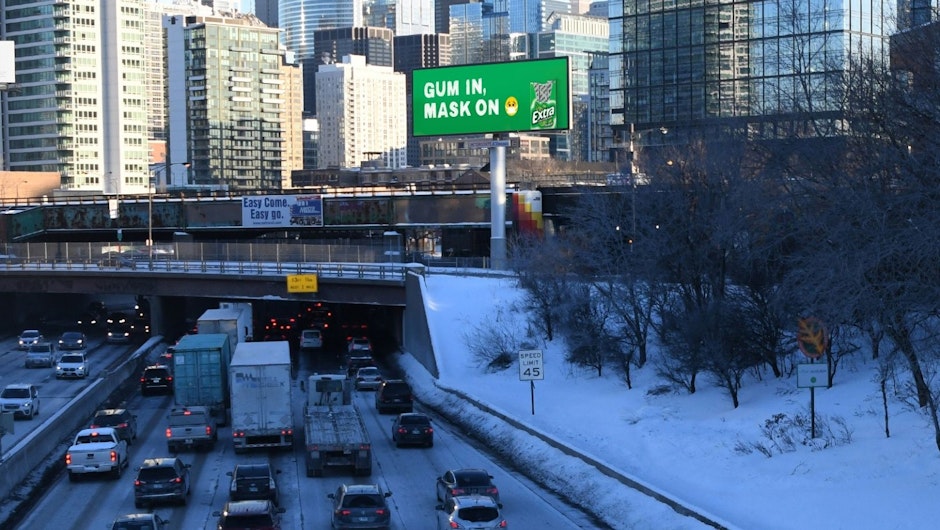4 reasons programmatic digital out of home will thrive in 2022
Jean-Christophe (JC) Conti is the CEO of VIOOH, a leading global digital out of home (DOOH) marketplace

Last year was a monumental year for the out of home (OOH) industry. Despite the unprecedented challenges thrown in its path in the past two years, OOH media has been extremely resilient and has bounced back even stronger, increasing by 38% to $1.75bn in Q3 last year, compared to the same period in 2020.
This impressive recovery has been driven by DOOH, including the increased adoption of programmatic DOOH (prDOOH). In fact, 66% of US agency and advertising executives reported that they have planned, bought, or placed digital OOH in the last 12 months, and the majority of these having done so programmatically.
Due to the continuing uncertainty of the pandemic, advertisers need the flexibility and adaptability of programmatic more than ever before. Additionally, as we’re starting to see the DOOH data landscape mature (and programmatic technology being put into place with most media owners and buyers becoming more knowledgeable on how to make the most out of prDOOH), adoption is only going to accelerate.
With forecasters predicting 2022 to be the year that programmatic increases its penetration of US DOOH to 15%, with a value of $367m, I believe 2022 is going to be the year of programmatic DOOH. Below are just some of the reasons why this new media buying method is going to thrive.
1. Advantages of a cookie-less future
Despite the delays, a cookie-less future is still looming for the advertising industry. And with the death of the third-party cookie, there is increasingly a shift back to the importance of contextual targeting, which signifies a huge opportunity for broadcast channels such as DOOH.
Increasing numbers of media buyers are diversifying their digital budgets to include programmatic DOOH as well as utilizing existing OOH budgets programmatically, enabling them to plan their campaigns around ID-free contextual triggers such as weather, footfall and even sports results to create privacy compliant, highly targeted ads in a broadcast setting.
Programmatic DOOH can react to triggers, such as high temperatures for ice-cream advertising, or it can be proactive, for example, creating a tailored message to football fans leaving a stadium after the game, all within a cookie-less, brand safe environment.
2. Integration into multi-channel campaigns
Programmatic DOOH is increasingly being seen as an enabler to support both brand and performance objectives, and due to this relevance at both ends of the funnel, we’re starting to see a real shift in prDOOH being planned and bought alongside other programmatic digital channels.
Nearly nine out of ten (86%) US executives plan to integrate programmatic DOOH more into their multi-channel campaigns. This will help advertisers reinforce their communications to market across channels, make it easier to plan and buy media strategically and create more measurable attribution and results.
An example of this approach includes sequential messaging, where targeted mobile ads run at peak commuting hours, followed up with related ads on digital screens at transit hubs when they arrive.
3. Lower barriers to entry
Programmatic DOOH is easy to plan, execute and deliver against and allows advertisers to adjust, pause and adapt in real-time, even within the hour. Advertisers and media buyers also have a meaningful benefit when using prDOOH, as they can leverage their unique data sets to decide whether they actually want to buy specific impressions. This way of trading not only increases their ROI but also enables greater flexibility.
Combining this flexibility with the availability of always-on deals also enables smaller businesses to utilize programmatic DOOH to reach highly targeted audiences in specific locations.
Due to these lower barriers to entry, we’re going to see more new advertisers enter the market than ever before, and both small and medium-sized businesses will be making the most of the powerful local effect of programmatic DOOH.
4. Advances in technology
The rollout of 5G globally increases both the quality and speed of digital OOH ads and, coupled with advances in the metaverse, this opens up even more creative opportunities for the DOOH industry.
An interesting recent example of this is Ocean Outdoor’s partnership with Admix, which enables advertisers to buy DOOH placements both in the physical and virtual worlds at the same time. These types of advancements are still in their infancy, but I look forward to seeing the impact they are going to have on the DOOH space, and how the flexibility and efficiency of prDOOH can help take these advancements even further.
In conclusion, with third-party cookies coming to an end, more advertisers implementing prDOOH into their multi-channel campaigns, the barriers to entry lowering for small businesses and the advances in 5G and the metaverse, it’s quite clear 2022 is going to be an exciting and successful year for programmatic DOOH.

